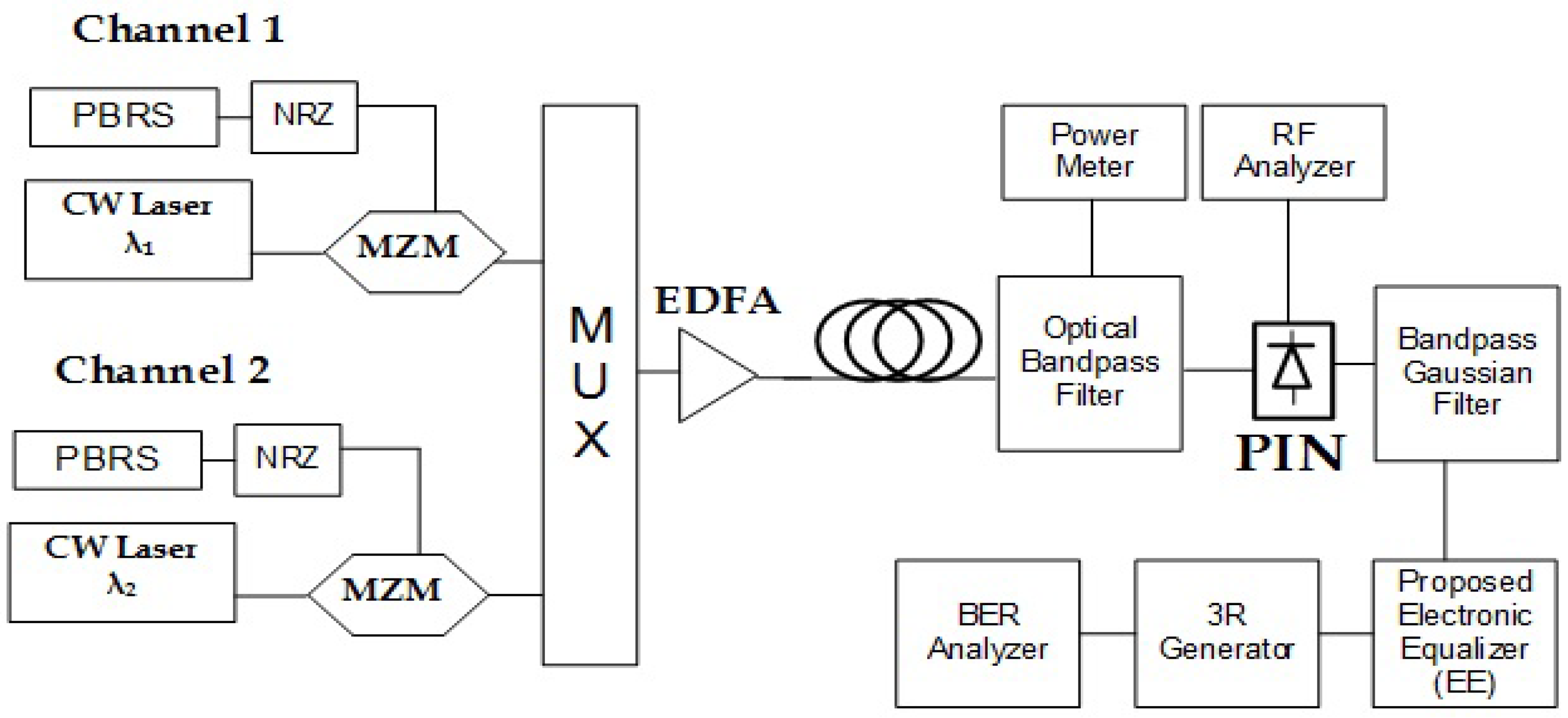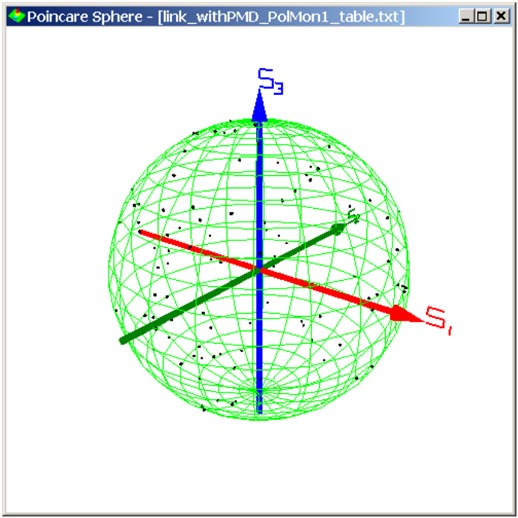

discussed the effects of PMD and have used a hybrid optical amplifier to achieve enhanced capacity in the polarization division multiplexed (PDM-QAM) system. It also decreases the installation cost, operational cost, and maintenance cost of the system, and, hence, the overall fixed cost of the system installation decreases. In RoF, the centralization of BS and reduced cell size offers uninterrupted high-data speed to serve a maximum number of customers. On the other hand, the disadvantage of the non-linear effects is that they limit the optical fiber communication. Non-linear effects also enhance the fiber performance hence, they offer innovative applications, such as fiber lasers, multiplexers, demultiplexers, etc. These non-linearities produce both generative and degenerative effects in the communication system. However, the optical fiber introduces various non-linearities while transmitting data through it.

These data are transported, using an optical fiber link. In RoF technology, the modulated RF signal is carried by uplink and downlink between central station (CS) and base station (BS). Optical fiber communication plays a vital role in our modern age communication systems. All these technologies require high bandwidth, high transmission speed, and minimum disturbance possible. Nowadays, it is difficult to imagine life without video calls, online high-resolution video streaming, biomedical sensors data aggregation, online gaming, virtual reality experience, artificial intelligence (AI), and the list goes on. With time, the need for superfast transmission speed of data is growing. It has also been observed that, for channel spacing of 100 GHz, the network performed better in comparison with 50 GHz. The optimum performance has been observed at a power level of −5 dBm for all these elected evaluation parameters. The performance metrics parameters chosen for evaluation are bit error rate (BER), quality factor (Q-factor), and eye diagrams and simulated on opti-system simulator. The performance of the system is evaluated with the existing WDM-RoF system. In this paper, a 16-channel 160 Gbps data rate WDM-based RoF system has been simulated and evaluated for optimum performance at a variable input power level, from 5 to −15 dBm, with the application of dispersion compensation fiber (DCF) and fiber Bragg grating (FBG), with channel spacing of 50 and 100 GHz. That results in the introduction of signal noise, unwanted frequencies, low quality of signals, and increased latency. However, the integration of optical fiber and wireless communication also generates non-linear effects as and when the number of users increases. Radio-over-fiber (RoF), integrated with wavelength division multiplexing (WDM) technology, is being considered one of the promising technologies. Such applications require larger bandwidth with minimum latency and seamless service delivery. The demand for data transmission is rising expensively for the applications of biomedical sensors data, multimedia technologies, and ultrahigh-definition online video streaming. 2Department of Electronics and Communication Engineering, Bhagat Phool Singh Women University Khanpur-Kalan, Sonipat, India.1Department of Electronics and Communication Engineering, University Institute of Engineering and Technology, Maharshi Dayanand University, Rohtak, India.Suresh Kumar 1, Sonia Sharma 1 and Sandeep Dahiya 2 *


 0 kommentar(er)
0 kommentar(er)
